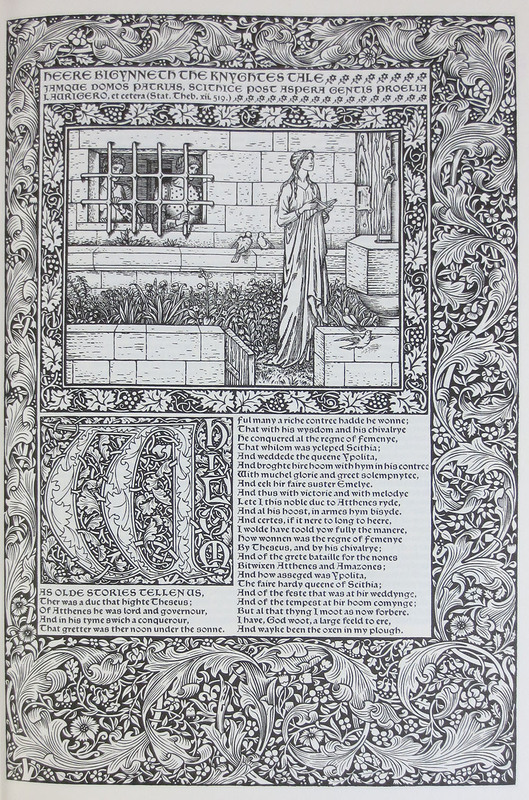The Works of Geoffrey Chaucer Now Newly Imprinted
Chaucer, Geoffrey, 1340?-1400.
The Works of Geoffrey Chaucer Now Newly Imprinted.
London: Basilisk Press, 1975.
Call Number: (BKRT)(FOL) PR 1850 1975
Acquired in Memory of Delia G. Ovitz, Librarian, 1901-1944.
Special Collections, Golda Meir Library
This is a limited edition facsimile of the Kelmscott Press production of Chaucer's works, held by many to be the most exquisite book of printed English literature. It was originally published in 1896 by William Morris with illustrations by Sir Edward Burne-Jones. It was the final book printed by Kelmscott Press under Morris and remains the only major effort to illustrate all of Chaucer's works.
Morris had a clear goal in mind when creating this edition: "A book ornamented with pictures that are suitable for that book, and that book only, may become a work of art second to none, save a fine binding duly ornamented or a fine piece of literature."
Burne-Jones designed eighty-seven illustrations for this edition. He includes twenty-eight illustrations in The Canterbury Tales, and those appear in only seven of the twenty-two tales. Fifteen are left completely unillustrated. Morris urged Burne-Jones to illustrate each of the texts, but Burne-Jones admitted in a letter to an associate that Morris always had "more robust and daring parts" than he had. Due to Morris' own failing health, however, he could not afford to tie up the project indefinitely while waiting for more illustrations.
That this edition was the crowning achievement for both men was not in doubt. Burne-Jones wrote, "Indeed, when the book is done... it will be a little like a pocket cathedral."
Burne-Jones inscribed his first copy to his daughter by writing, "I want particularly to draw your attention to the fact that there is no preface to Chaucer, and no introduction, and no essay on his position as a poet, and no notes, and no glossary; so that all is prepared for you to enjoy him thoroughly." This attitude shows the overall respect of Chaucer's work held by Burne-Jones. It needed no commentary or explanation.

